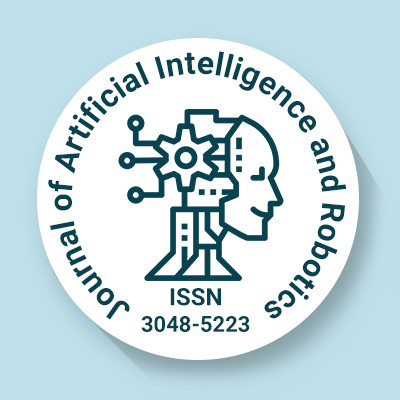
Journal of Artificial Intelligence and Robotics
OPEN ACCESS
ISSN: 3048-5223

OPEN ACCESS
ISSN: 3048-5223
Computer vision is a technology that allows machines to automatically recognize and describe images with impressive accuracy and efficacy. Nowadays, computer systems can tap into a vast amount of images and video data, whether it’s from smartphones, traffic cameras, security systems or other devices. Applications of computer vision leverage artificial intelligence and machine learning to process this data effectively, enabling tasks like object identification, facial recognition, classification, recommendations, monitoring, and detection.
Even though visual information processing technology has been around for a while, it still relied heavily on human input, which made it both tedious and prone to mistakes. Take facial recognition systems, for instance; developers had to painstakingly label thousands of images with crucial details like the width of the nose bridge and the spacing between eyes. To automate these tasks, computing power is needed, given that image data is messy and tricky for computers to make sense of. As a result, vision applications turned out to be costly and out of reach for many organizations.
Computer vision systems harness the power of artificial intelligence (AI) to replicate the brain’s ability to recognize and classify objects. To achieve this, computer scientists feed computers a massive amount of visual data. Through machine learning algorithms, these systems learn to spot common patterns in images or videos, which helps them accurately identify new images. For instance, when computers analyze millions of car images, they start to develop a set of identity patterns that enable them to detect vehicles in other pictures. Computer vision relies on various technologies, including those listed below.
The common tasks of computer vision are image classification, object detection, object tracking, segmentation, content based image retrieval.
Image Classification
Image classifications allows computers to interpret images and correctly identify what category they belong to. Through computer vision, these systems can understand different classes and label them, like trees, airplanes, or buildings.
Object Detection
Object detection is an area of computer vision focused on spotting objects with images. It employs classification techniques to identify, categorize, and arrange these images. This technology plays a crucial role in various industrial and manufacturing processes, helping to manage autonomous applications and keep an eye on production lines.
Object Tracking
Segmentation is a computer vision technique that helps identify objects by breaking down images into various regions based on the pixels present. It also makes images easier to understand, like outlining a shape or form of an object to clarify what it is.
Content-based Image Retrieval
Content-based image retrieval is a fascinating application of computer vision that allows us to search for specific digital images within vast databases. It works by analyzing metadata such as tags, descriptions, labels, and keywords.